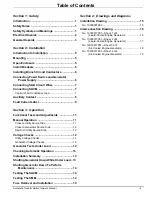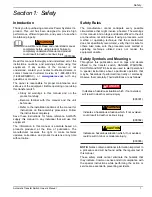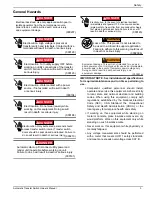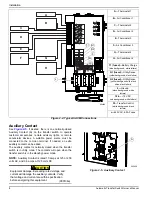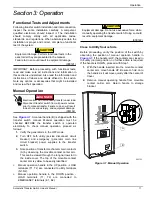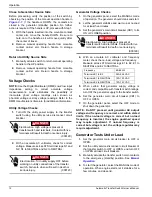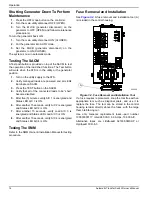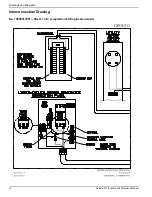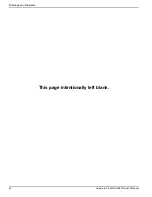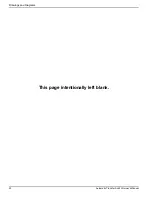
Installation
Automatic Transfer Switch Owner’s Manual
7
NOTE:
A Neutral to Ground bonding screw (A) is
provided for use if required by local codes.
Conductor sizes must be adequate to handle the
maximum current to which they will be subjected, based
on the 75°C column of tables, charts, etc. used to size
conductors. The installation must comply fully with all
applicable codes, standards and regulations.
All power cables can enter the enclosure through the
provided knockouts. Additional knockouts into the
transfer switch can be made in the field as needed.
Conduit entry shall maintain the proper wire bending
spaces required by Tables 312.6 (A) and (B) in the NEC.
Conduits should be arranged to provide separation
between the Utility and Generator supply conductors
inside the enclosure.
NOTE:
If aluminum conductors are used, apply corrosion
inhibitor to conductors. After tightening terminal lugs,
carefully wipe away any excess corrosion inhibitor.
Tighten terminal lugs to the torque values as noted on the
decal located on the inside of the door. After tightening
terminal lugs, carefully wipe away any excess corrosion
inhibitor.
Connecting Start Circuit Wires
Control system interconnections consist of N1, N2, and
T1, and leads 23, 194, and 9 (Ground). The connections
are color coded on the load shed to match connections in
the Generac genset. Generac cable tray cable includes
power cables with all necessary color-coded control
wiring. It is suitable for direct burial, overhead and indoor
wiring.
The generator control wiring is a Class 1 signaling circuit.
Reference instruction manual of specific engine
generator for wiring connection details. Recommended
wire gauge sizes for this wiring depends on the length of
the wire, as recommended in the following chart:
Exception:
Conductors of AC and DC circuits, rated
1000 volts nominal, or less, shall be permitted to occupy
the same equipment, cable, or conduit. All conductors
shall have an insulation rating equal to at least the
maximum circuit voltage applied to any conductor within
the equipment, cable, or conduit. See NEC 300.3(C)(1).
Connecting SACM
See
. The SACM can control an air conditioner
(24 VAC) directly.
Control of Air Conditioner Load
1.
Route the thermostat cable (from the furnace/
thermostat to the outdoor air conditioner unit) to the
transfer switch.
2.
Connect the wire to the terminal strip terminals
(A/C 1) on the SACM as shown in
These are normally closed contacts which open
upon load shed conditions. Route thermostat wire
away from high voltage wires.
3.
If required, connect additional air conditioners to
the terminal strip terminals (A/C 2-4).
NOTE:
These instructions are for a typical air conditioner
installation. Control of certain heat pumps and 2-stage air
conditioners may require special connections or the use
of SMMs to control the loads.
Maximum Wire Length
Recommended Wire Size
1–115 ft (1–35 m)
No. 18 AWG
116–185 ft (36–56 m)
No. 16 AWG
186–295 ft (57–89 m)
No. 14 AWG
296–460 ft (90–140 m)
No. 12 AWG
(000120)
CAUTION
Equipment damage. Verify all conductors are tightened
to the factory specified torque value. Failure to do so
could result in damage to the switch base.
Contact Ratings
A/C 1-4
24 VAC, 1.0 Amp Max
Summary of Contents for RXSW200A3F
Page 4: ...iv Automatic Transfer Switch Owner s Manual This page intentionally left blank ...
Page 8: ...Safety 4 Automatic Transfer Switch Owner s Manual This page intentionally left blank ...
Page 14: ...Installation 10 Automatic Transfer Switch Owner s Manual This page intentionally left blank ...
Page 27: ......



